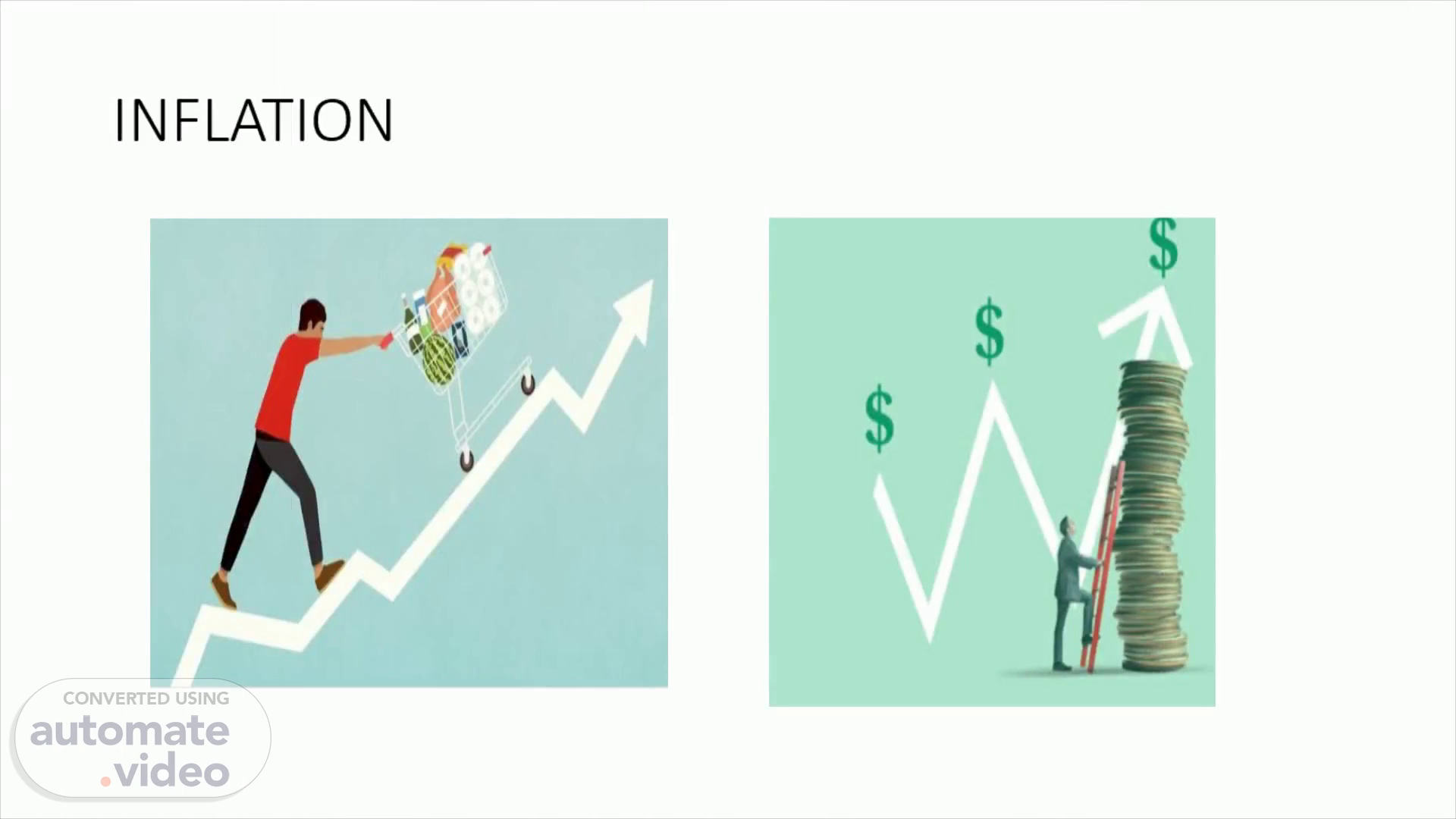Scene 1 (0s)
INFLATION.
Scene 2 (7s)
Student should by able to: •Give the definition of inflation.; •Distinguish between the different type of inflation; •Give the cause and consequences of the different type of inflation..
Scene 3 (20s)
Inflation is the general level of the prices of goods and services in an economy over time is known as inflation.Each unit of currency is worth less when the overall price level rises.It is essential to keep in mind the following facts regarding inflation: •An increase in prices generally is referred to as inflation. •It is a process that takes place over a period of time; •it refers to a significant price increase; •it reduces the purchasing power of money..
Scene 4 (43s)
Types and characteristics of inflation. Demand pull-inflation A rise in the price of a good or service is typically brought on by an increase in demand and a lack of supply.In most cases, demand-pull inflation occurs when the total demand for goods and services rises but the total supply does not.The following characteristics are found in demand-pull inflation: • A slight rise in overall demand. • Because they want imported goods, foreigners contribute to demand-pull inflation. This is because the demand puts more pressure on the limited supply, which in turn raises prices even more..
Scene 5 (1m 28s)
•Consumer inflation In South Africa the following types of consumer inflation are identified: •Core inflation • headline inflation •administrated price inflation are all examples of inflation. .The Production Price Index (PPI) is the index we use to measure producer inflation.The prices are measured by the PPI at the level of the first significant business transaction.For instance, when goods leave the factory where they were made or when imported goods enter the country. •. All-inflation The GDP deflator is used to determine an economy-wide inflation rate and all-inflation, or inflation across all goods and services •The term "hyperinflation" refers to a very rapid rise in prices at a very high rate of inflation, which renders money worthless. •Stagflation is characterized by low economic growth, a high unemployment rate, and high inflation rates. •A decrease in the general level of economic prices is known as deflation..
Scene 6 (2m 6s)
THANK YOU.
